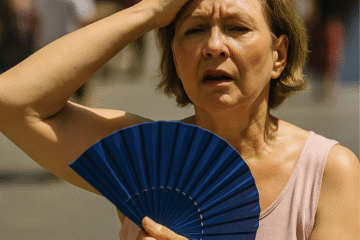Jet Lag: The Science, Factors, and Strategies
Jet lag, clinically known as desynchronosis, is a physiological condition resulting from rapid long-distance trans-meridian travel, typically by an airplane. The resultant disruption of our internal biological clock, or circadian rhythm, leads to symptoms such as insomnia, fatigue, difficulty concentrating, and even gastrointestinal issues. This article aims to delve deeper into the science of jet lag, discuss who tends to be more susceptible, and provide practical, evidence-based strategies to beat it.
The Biological Basis of Jet Lag
Our bodies operate on a natural 24-hour cycle known as the circadian rhythm. This internal clock, regulated by the hypothalamus in the brain, governs various physiological processes such as sleeping and feeding patterns, core body temperature, brain wave activity, hormone production, and cell regeneration.
The suprachiasmatic nucleus (SCN), located in the hypothalamus, is primarily responsible for maintaining this rhythm. The SCN uses daylight as its primary cue, with light exposure to specialized cells in the retina sending signals that synchronize our bodily functions to the day-night cycle.
Jet lag occurs when we cross multiple time zones rapidly, disrupting this delicate synchronization. The misalignment between our internal clock and the new local time in our destination leads to the wide array of symptoms known as jet lag.
Factors Influencing Jet Lag
The severity and duration of jet lag vary based on several factors:
1. Number of Time Zones Crossed: Jet lag typically becomes noticeable when traveling across three or more time zones. The more time zones crossed, the harder it is for our body to adjust.
2. Direction of Travel: Traveling eastward tends to cause more severe jet lag than westward journeys because “advancing” our circadian rhythms is typically more challenging than “delaying” them.
3. Age: Older adults might take longer to recover from jet lag than younger people due to less flexible biological rhythms and slower physiological responses.
4. Chronotype: “Night owls” often find it easier to adapt to westward travel, while “morning larks” may cope better with eastward travel.
While research is ongoing, current evidence does not suggest that race, gender, or specific hormonal profiles significantly impact susceptibility to jet lag.

Practical Strategies to Beat Jet Lag
Armed with the scientific understanding of jet lag, we can employ effective strategies to alleviate it:
1. Pre-flight Adjustment: Gradually shift your sleeping and eating schedule to align with your destination’s local time a few days before your trip.
2. In-flight Hydration: Dehydration can exacerbate the symptoms of jet lag. Drink plenty of water and avoid alcohol and caffeine during your flight.
3. Light Exposure: Seek or avoid daylight based on your destination’s time to help your body adjust. Exposure to natural outdoor sunlight can be particularly effective in shifting your circadian rhythm.
4. Melatonin Supplementation: Melatonin, a hormone integral to sleep regulation, can help adjust your sleep-wake cycle and can be particularly useful when traveling eastward.
5. Physical Activity: Regular exercise can help recalibrate your circadian rhythm, but avoid intense activity close to bedtime as it might disrupt sleep.
Conclusion
While jet lag is a common inconvenience of modern travel, understanding its biological basis and influencing factors can help in devising effective strategies to minimize its impact. It’s essential to remember that everyone’s body responds differently, and if jet lag causes significant issues, consulting a healthcare provider for personalized advice might be necessary. Safe travels!
Reference
- Saper, C.B., Scammell, T.E., & Lu, J. (2005). Hypothalamic regulation of sleep and circadian rhythms. Nature, 437(7063), 1257–1263. https://doi.org/10.1038/nature04284. Link
- Waterhouse, J., Reilly, T., Atkinson, G., & Edwards, B. (2007). Jet lag: trends and coping strategies. The Lancet, 369(9567), 1117–1129. https://doi.org/10.1016/S0140-6736(07)60529-7. Link
- Adan, A., Archer, S.N., Hidalgo, M.P., Di Milia, L., Natale, V., & Randler, C. (2012). Circadian typology: A comprehensive review. Chronobiology International, 29(9), 1153–1175. https://doi.org/10.3109/07420528.2012.719971. Link
- Maughan, R.J., & Leiper, J.B. (1996). Maintenance of fluid balance in prolonged exercise. In: Gisolfi C.V., Lamb D.R. (eds) Perspectives in Exercise Science and Sports Medicine. Vol 9. Fluid Homeostasis During Exercise. Cooper Publishing Group, Carmel, IN, pp. 234–274. Link
- Herxheimer, A., & Petrie, K.J. (2002). Melatonin for the prevention and treatment of jet lag. Cochrane Database of Systematic Reviews, (2), CD001520. https://doi.org/10.1002/14651858.CD001520. Link
- Olds, T., Maher, C., & Matricciani, L. (2011). Sleep duration or bedtime? Exploring the relationship between sleep habits and weight status and activity patterns. Sleep, 34(10), 1299–1307. https://doi.org/10.5665/SLEEP.1266. Link




0 Comments